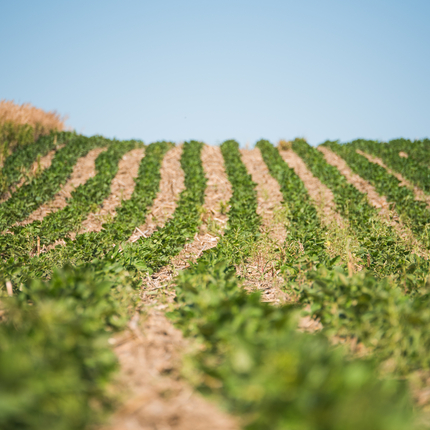By Cameron Peirce, published on hjp.com (High Plains Journal)
“Farmers help feed the world.”
I’ve heard that many times and have seen it on signs and in magazines. My family on the Peirce farm takes pride in those words. However, I think it’s time to expand the public’s understanding and support of an agriculture that does more than produce food.
On our Reno County, Kansas, farm, we help make water cleaner and more plentiful to our urban cousins in the area—including the half million or so folks in the Wichita municipal region that rely on Cheney Lake for their drinking water. By focusing on conservation, our goal is to have a healthier soil that better retains moisture and holds nutrients.
Use of precision agriculture allows us to monitor and apply water and nutrients where needed. We recently converted some irrigated acres to a buried drip system, which reduces water use and lowers impact on the soil. With the addition of rotations that integrate cover crops, weed pressure goes down, and water and nutrients stay in the soil and not in the streams.
These are just a few changes in technology and management that support an agriculture that is both productive and environmentally responsible. These changes usually mean farmers need to continually learn and make changes on the farm. That takes capital and involves risk—we can’t control the weather or markets.
To address this risk, I appreciate the investment our nation makes to ensure there is a safety net for production, whether in the form of crop insurance or other revenue protections. But just as important, conservation programs support long-term productivity and profit for farmers as well as clean water and air, wildlife habitat, and long-term food security for everyone.
Working lands conservation programs administered by the U.S. Department of Agriculture like the Conservation Stewardship Program and the Environmental Quality Incentives Program have been a tremendous support to our farm. Voluntary programs like these have helped support our investments in cutting edge technology and practices.
Supporting conservation in agriculture also saves valuable tax dollars. Conservation practices—like using cover crops, managing brush in grasslands and reducing tillage—makes farming and ranching more resilient in the face of more frequent droughts, floods and fires. This, in turn, means less taxpayer money spent on disasters and revenue loss.
As Congress moves forward with writing the 2018 farm bill, legislators must not shortchange conservation—especially those working lands programs like CSP and EQIP. Strong support of conservation is a win-win for both farmers and all Americans.
Cameron Peirce operates Peirce Farms along with his wife and two sons in Reno County. He serves as the Reno County Farm Bureau Board chairman; and vice-chair of the Kansas Sunflower Commission.





